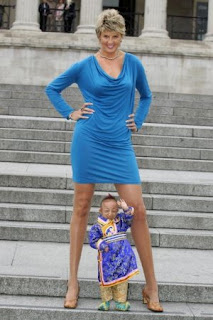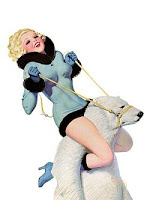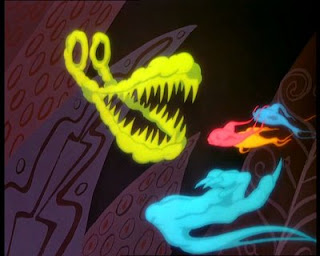 Saturday, September 27th, 2008, I was working at The Leaf and Bean. Normally Saturday morning are very quiet at the Bean, but not this morning, oh no. We had a line to the door and I was shocked! What is going on?!
Saturday, September 27th, 2008, I was working at The Leaf and Bean. Normally Saturday morning are very quiet at the Bean, but not this morning, oh no. We had a line to the door and I was shocked! What is going on?!It was the Bozeman High School's 2008 Homecoming parade and guess what the theme for Homecoming is this year at Bozeman High......"Alice in Wonderland"......hmmm. And as the parade floated by the Bean windows I saw the Mad Hatter and Alice and the rest of the gang sitting down to tea riding on a trailer attatched to the back of a pick-up. I had to investigate so I went onto the Bozeman High School website and looked at their Hawk Tawk publication and found an article written all about their homecoming to come, 'Homecoming in Wonderland' (at the botom of the post). Bozeman High students are going to be able to walk into their own fairytale night of Alice in Wonderland, very much in the backyard of Bozeman, like Oz is only in Dorothy's Kansas backyard. Talk about displacing fairytales into realism or rather becoming the fairytale on a typical fairytale wannabe night for most high school students!

Homecoming In Wonderland
Simona Rackauskas
September 26, 2008
This year’s Homecoming theme is “Alice in Wonderland” and by letting the theme inspire your night you can guarantee to make this a Homecoming unlike any other. ‘But how do I incorporate the theme into my night’, you ask? Never fear, I’ll help you! With these tips you can have a wonderful Homecoming and I suggest you make every effort to because this year is especially special; this year Homecoming falls on your un-birthday.
The first matter to address is what you’re going to wear. The obvious choice for a girl is a light blue dress with a voluminous skirt, and a black ribbon in her hair. A guy might dress like the Mad Hatter, with a colorful suit and a top hat. Ladies, if you consider yourself a non-conformist I suggest you wear a suit also. Or take your inspiration from the Cheshire cat and incorporate purple stripes into your outfit. Follow the Rabbit’s lead, and stay on time with a pocket watch. Wear pieces with patterns containing spades, clubs, diamonds or hearts to symbolize the Queen’s cards. Use your creativity to come up with something unique.
So you’re looking hot, but how are you going to get to the dance? Make sure to plan ahead and find cooler transportation than Alice. Your date would be pretty frustrated if you told him or her that they’re going to have to walk everywhere. And if your date is late picking you up, don’t miss an opportunity to sing ‘We’re late! We’re late! For a very important date…”
Once you arrive at dinner, steer away from ordering dishes containing mushrooms, as it could be dangerous if you grow and/or shrink later on in the evening. Be cautious of cookies that say ‘Eat Me’ and bottles that say ‘Drink Me’. Order some tea at dinner, as the tea party is one of the most famous “Alice in Wonderland” scenes.
I cannot help you with what to do concerning this year’s theme during the dance, as I have only been to one Homecoming in my high school career, but of course I advise you have the most fun possible. However keep it safe kids, please don’t take part in any Caterpillar-like activities (you know what I’m talking about) during Homecoming.
Wrap up the night with an after-party that includes midnight games of croquet with flamingos and porcupines, card games played with singing and dancing cards, and perhaps even a tea party with a hare, a Mad Hatter and a mouse. At the end of the night when it’s time to sleep, curl up in a teapot like the Dormouse and sing yourself to sleep, “Twinkle, twinkle little bat / How I wonder what you’re at? / Up above the world you fly / Like a tea tray in the sky.” Sweet dreams!
However you celebrate this Homecoming, be sure to make it your wonderland and use the night to escape the mundane of everyday life. “Alice in Wonderland” reminds us that anything is possible (even if only in dreams), and above all apply this concept to your night for success. As the Doorknob says to Alice when she cannot go through the door, “No. [It’s not impossible. It’s] impassible. Nothing’s impossible.”












 How and where you read greatly influence your experience with the story you are reading. Sutter and I decided that it might be fun to read aloud to eachother from our Classic Fairy Tales book. We really got into the storytelling art and after reading "East of the Sun and West of the Moon" together we've decided to read to eachother at least one fairy tale a night. Isn't that how we hear most fairy tales when we are younger, aloud?
How and where you read greatly influence your experience with the story you are reading. Sutter and I decided that it might be fun to read aloud to eachother from our Classic Fairy Tales book. We really got into the storytelling art and after reading "East of the Sun and West of the Moon" together we've decided to read to eachother at least one fairy tale a night. Isn't that how we hear most fairy tales when we are younger, aloud?





